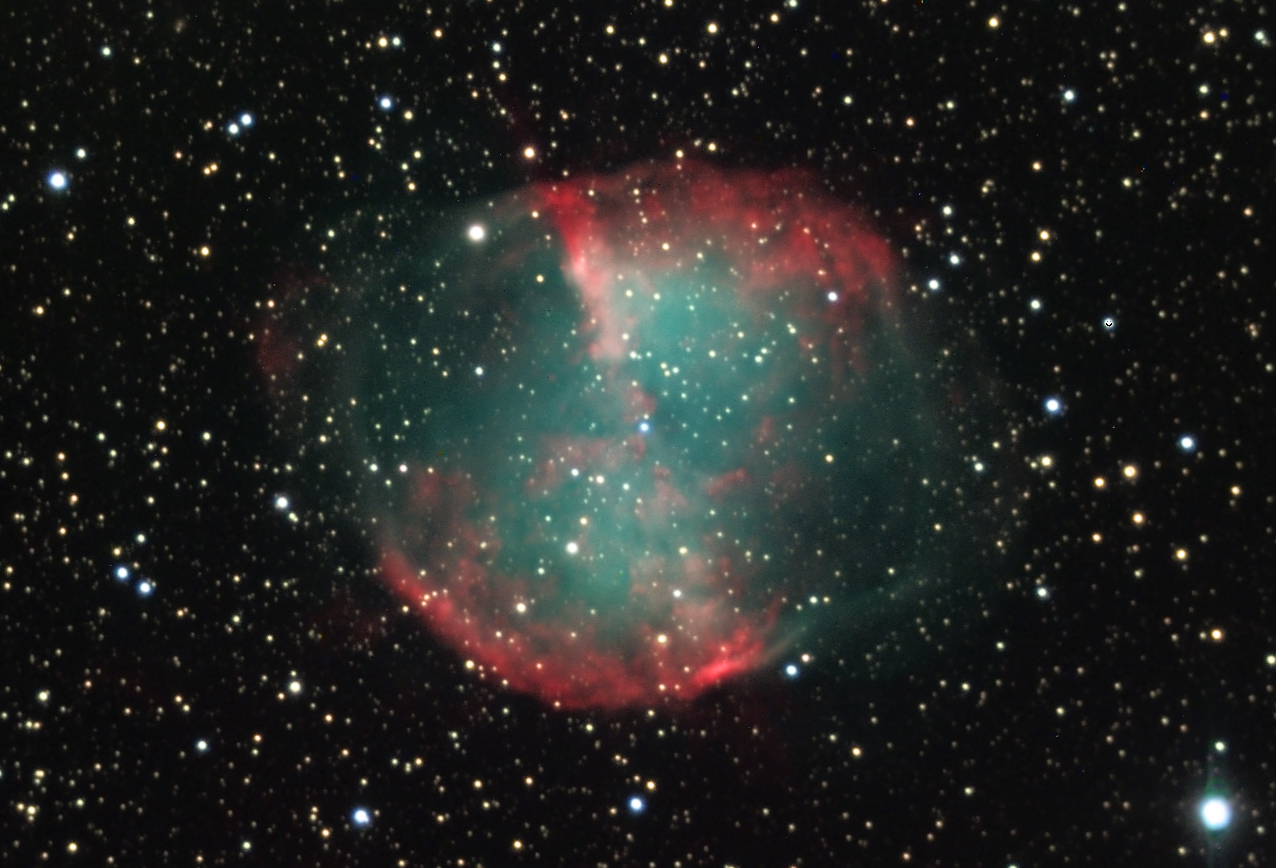Technical Information:
LRGB: 168:56:56:98 (L, R and G were 8 minute individual images; B was 14 minute individual images; L images unbinned; RG&B binned2x2).
Equipment: 10" LX200 at f/12, and an SBIG ST-8XE camera/CFW-8 color filter wheel, guided with an SBIG AO-7, at 15 Hz in Lum/1-7 Hz in RGB.
Image Acquisition/Camera Control: CCDSoft V5.
Processing: All images calibrated (darks and dawn flats) and registered in AIP4WIN. All layers average combined in Ray Gralak's Sigma Reject program. Fast Lucy-Richardson deconvolution (one iteration), followed by a slow L-R deconvolution (ten iterations, high frequency components only) performed in AIP4WIN. Color combine, very gentle unsharp mask on the luminance layer, gaussian blurs, and adjustment of curves and levels, performed in Photoshop 6.0. Smile added by my daughter, in Photoshop.
Location: All images taken at the Table Mountain Star Party, near Ellensburg, Washington, USA, elevation 6500'.
Date: Luminance images taken on the night of July 25, 2003; color images taken during the nights of July 24 and 25, 2003.
CCD Temperature: Luminance taken at -15C; R, G and B at -25C & -20C.
Moon Phase: Last couple of days before new moon.
Image Scale: .61 arcseconds per pixel
Seeing: Highly variable, with 2.5 arcsecond FWHM perhaps being the average; luminance layer deconvolved to 2.1 arcseconds per pixel.

